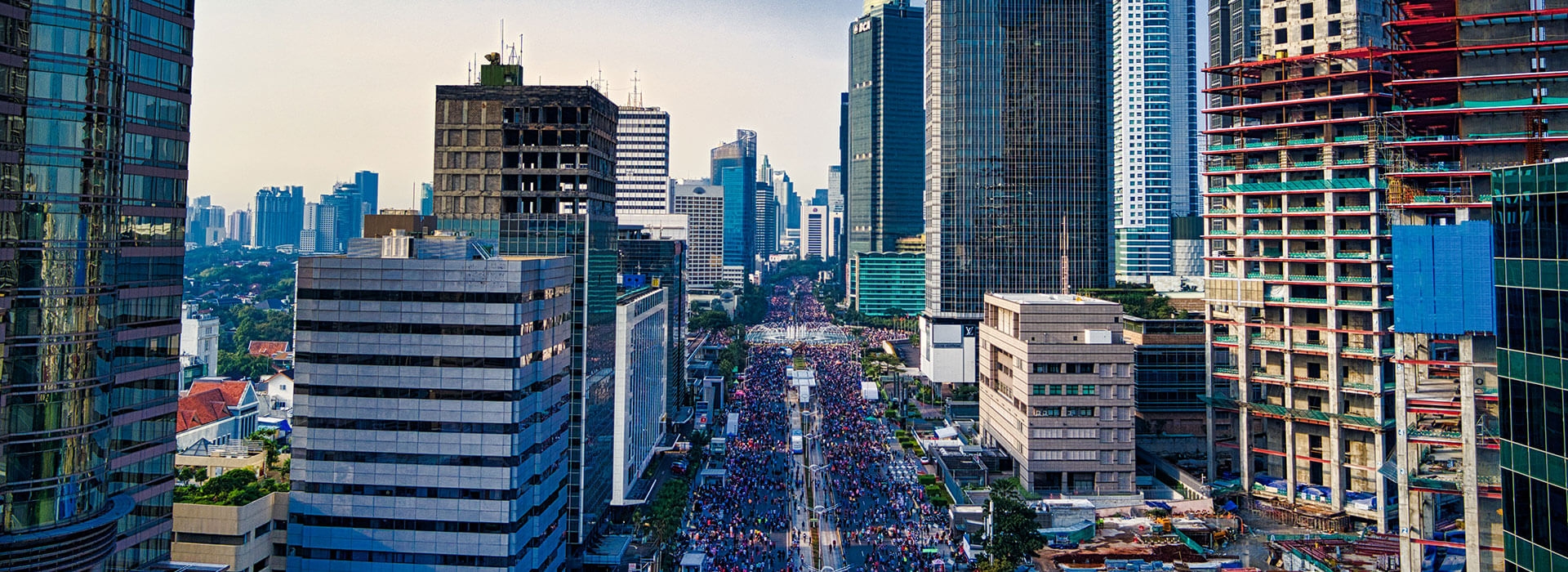The number of properties sitting vacant across Sydney is at a record high, new research has revealed, as the rate of empty CBD properties tops out at 16.2 per cent.
Sydney’s residential vacancy rate is the highest on record since 2005, SQM Research showed, rising to 4 per cent over May.
There are now 29,416 properties sitting vacant across Sydney, with a lack of holiday makers and international students due to the coronavirus-related restrictions on travel having the biggest impact on the NSW capital’s rate.
Melbourne and Canberra also saw a rise in rental vacancies, although these were below their peaks.
Melbourne jumped by 0.3 percentage points to 3.1 per cent while Canberra was up 0.1 percentage point to 1.3 per cent.
Despite the rises across Sydney, Melbourne and Canberra, the national vacancy rate has actually fallen.
SQM Research’s managing director Louis Christopher said vacancy rates had dropped across Brisbane, Perth, Darwin and Hobart, which had pulled the overall national rate down.
Rental Vacancy rate Australia – May 2020
| CAPITAL CITY |
MAY 2020 |
APRIL 2020 |
MAY 2019 |
TOTAL VACANCIES (MAY 2020) |
| Sydney |
4% |
3.9% |
3.3% |
29,416 |
| Melbourne |
3.1% |
2.8% |
1.8% |
18,499 |
| Brisbane |
2.5% |
2.8% |
2.4% |
8,780 |
| Perth |
2% |
2.3% |
3.1% |
4,167 |
| Adelaide |
1.2% |
1.2% |
1.1% |
2,293 |
| Canberra |
1.3% |
1.2% |
1.2% |
880 |
| Darwin |
2.3% |
2.6% |
3.3% |
727 |
| Hobart |
1.2% |
1.4% |
0.5% |
386 |
| National |
2.5% |
2.6% |
2.2% |
86,398 |
Source: SQM Research. SQM’s calculations of vacancies are based on online rental listings that have been advertised for three weeks or more compared to the total number of established rental properties.
These capitals had also recorded some rises in asking rents for houses, while Sydney, Melbourne and Canberra saw a drop in rental prices.
“There’s more choice for tenants but it’s a very tough time for landlords right now,” Mr Christopher told Domain.
Vacancy rates in the CBDs of each capital saw Sydney lead the way with 16.2 per cent of rentals vacant, up from 13.8 per cent in April.
In Brisbane, 13.3 per cent of rentals sat empty, while 9.3 per cent were vacant in Melbourne’s CBD.
Rental Vacancy rate by CBD – May 2020
| Inner city |
May 2020 |
May 2019 |
| Sydney CBD |
16.2% |
8.1% |
| Brisbane CBD |
13.3% |
4.5% |
| Melbourne CBD |
9.3% |
2.2% |
| Adelaide CBD |
7.8% |
2.6% |
| Canberra CBD |
7.7% |
3.5% |
| Perth CBD |
6% |
6% |
| Darwin CBD |
5% |
6.3% |
| Hobart CBD |
2.7% |
0.9% |
Source: SQM Research. SQM’s calculations of vacancies are based on online rental listings that have been advertised for three weeks or more compared to the total number of established rental properties.
Mr Christopher said the lack of international and interstate holidaymakers, as well as the hiatus of of international students, had had a massive impact on these cities.
“These areas like the inner city and holiday areas have definitely been hit the hardest,” Mr Christopher said. “Business trippers and holidaymakers have been using Airbnbs in the inner city because they want to be where the action is.
“That has dried up with the border closures and caused a significant rise in the CBDs.”
Areas where more affluent holidaymakers stay have also been affected by border closures.
The rental vacancy rate in Bondi Beach was sitting at a record high 6.4 per cent, up from just 2.1 per cent in February. Likewise, Palm Beach on Sydney’s northern beaches recorded a vacancy rate of 16.7 per cent up from 12.4 per cent in February.
Though the rate fluctuates in these suburbs with the seasons, the rental markets had been particularly tough.
Richardson & Wrench senior property manager Ari Pappas said it was always harder for landlords to find tenants in the winter months as many did not want to pay higher rents when they were unable to use the beach. The COVID-19 pandemic had made that much worse.
“This year we’ve had the double whammy with winter and coronavirus,” Mr Pappas said. “It’s definitely affected us.”
While travel bans had hit hard, there was some hope on the horizon as inquiries on rentals had started to lift with the easing of restrictions in some states.
“Since the restrictions have started to ease off a bit, we’ve been seeing a lot more inquiries coming through,” Mr Pappas said.
Mr Christopher said he believed vacancy rates would likely fall in the coming months as restrictions eased.
“The lifting of restrictions between states, that’s going to mean a pick-up in business trips as well as interstate domestic tourism which will help somewhat,” Mr Christopher said. “Vacancy rates will remain elevated until the international borders are open again.”
Source: domain.com.au
